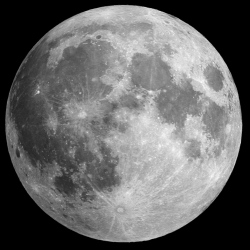
Chinese scientists have identified a new kind of moon rock. An unmanned Chinese lunar lander, launched in 2013, has explored an ancient flow of lava and identified mineral composition entirely unlike anything collected by the American astronauts between 1969 and 1972, or by the last Soviet lander in 1976.
The moon is thought to have formed when a Mars-sized object crashed into planet Earth early in the history of the solar system. The debris from the collision coalesced and cooled, but radioactive elements deep in the interior heated up the rock beneath the crust, and 500 million years later, volcanic lava slurped into impact craters on the moon to form the so-called “seas” or maria.
The Yutu rover’s instruments started examining lava that probably flowed about 3 billion years ago. Geochemists can reconstruct a rock flow’s history from the telltale mix of minerals in the cooled lava. Basalts sampled by astronaut expeditions or collected by a Soviet Luna probe tended to be distinguished in two ways: either high in titanium, or low.
But the latest find reported from the first soft landing on the Moon in 40 years is both intermediate in titanium content and rich in iron oxide.
“The diversity tells us that the Moon’s upper mantle is much less uniform in composition than Earth’s. And correlating chemistry with age, we can see how the moon’s volcanism changed over time,” said Bradley Joliff of the Washington University of St Louis, the only American partner in the Chinese team.
The mix of minerals in magma tells a story: that is because minerals in molten rock characteristically crystallise at different temperatures. So rock on the surface delivers clues to the deep interior of a planet.
“The variable titanium distribution on the lunar surface suggests that the Moon’s interior was not homogenised,” Professor Joliff said. “We’re still trying to figure out how this happened.”
